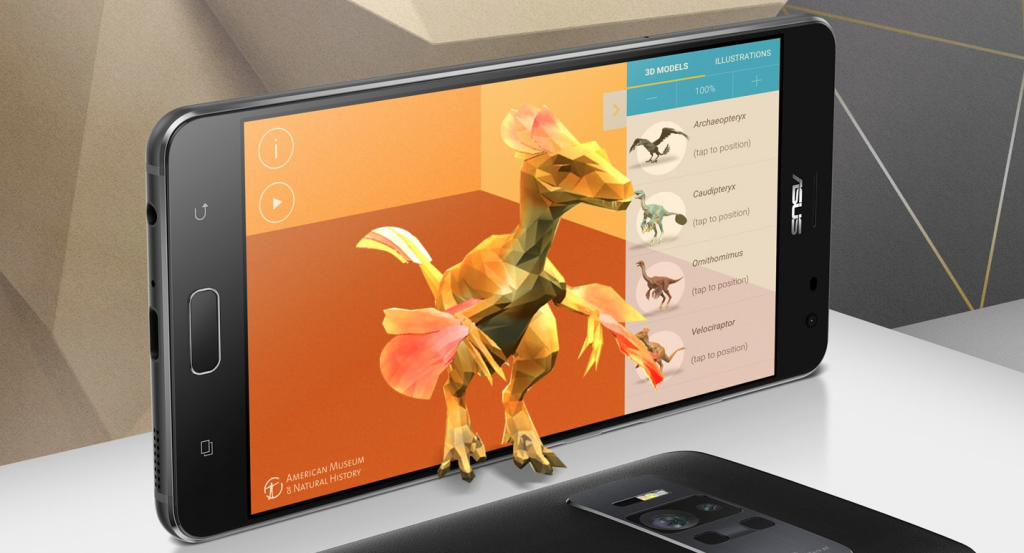Every January, major companies, startups, apps, hardware, and tech optimists gather together in Las Vegas for the biggest gadget show on earth – the Consumer Electronics Show (CES).
Here are the major highlights from CES 2017, and what tech trends businesses need to be aware of for the coming year.
Digital home helpers expand beyond Amazon
[caption id="attachment_6516" align="aligncenter" width="625"] source: lenovo[/caption]
Amazon might have been first to market, but if CES 2017 is any indication, Alexa is going to have a lot of competition in the next few years:
- Lenovo launched a smart home assistant, albeit powered by Alexa.
- Netatmo, which is basically a health tracker for your home, debuted. It integrates with Apple HomeKit and measures things like humidity, air quality, noise, and temperature.
- Kuri, an outrageously adorable robot made a big splash. It’s a person robot that does…. Something. Frankly utility wasn’t high on the Kuri development team’s list of requirements, but it is awfully cute.
So, what does this mean for businesses?
Quite a lot. Generally speaking, these sorts of home helpers are a new interface over existing information technology infrastructure like Google search.
Which is good! It means that you can simply expand your existing communication channels to reach customers through these new interfaces:
- Ramp up your SEO work for critical keywords
- Continue building content
- Optimise using Google’s Schema language
- Make sure you’re producing content that works well for voice activated search
- Explore developing Alexa skills, if it fits your business needs
AR’s usefulness expands beyond Minecraft
[caption id="attachment_6514" align="aligncenter" width="625"]

Source: asus.com[/caption]
While Augmented Reality (AR) has jumped ahead with
applications like Minecraft, it’s lagged a bit for more useful functions – until now.
Zenfone AR from Asus is slotted to be one of the world’s first smartphone that’s AR-compatible. Built to work with the AR and VR software being developed by Google, as well as with programs like Autodesk, the Zenfone is the first phone that’s been built from the ground up with VR and AR in mind.
It has some incredibly powerful specs to facilitate the complex programs AR and VR demand as well as a
unique camera system that lets the phone “create a three-dimensional model of its surroundings and track its motion, so it can see the world just like you do.”
While the actual functionality of this remains to be seen, the fact that we’re getting ever-closer with AR and VR tech is a positive step, as is the fact that it’s finally moving beyond games.
For designers, developers, sales and marketing, AR and VR might provide the chance to fully demonstrate their idea. No longer will clients have to imagine your vision. With the Zenfone AR, it’s increasingly likely you’ll be able to show them with your smartphone.
Cars are getting a MAJOR upgrade
[caption id="attachment_6515" align="aligncenter" width="625"]

source: ff.com[/caption]
Tesla might have been first, but like everything in the tech world, their first to market benefit is starting to erode. And this year, CES 2017 saw a big push to get in the high-end, fancy-pants tech car market.
First up is the
Faraday Future FF91. It looks like it was designed by the same people who design car chases in every futuristic movie ever (think
iRobot and
Minority Report). Aesthetics aside, it’s a serious contender in the environmentally friendly luxury car market. Financed by
LeEco and with a managerial team from all over the high end car world, they’re well positioned to offer a Tesla alternative to the same audience.
But Faraday Future isn’t alone in advancing our understanding of what a car is.
Toyota also got in the game with the
Toyota Concept-i. Packed with all sorts of insane next-generation tech, the Concept-i is a significant deviation from what we think of when we think ‘car’. For example, it has biometric data to read your emotional state and behave accordingly, and the autonomous driving function is ready to take over at a moment’s notice. From all reports, the Concept-i has been designed from the inside out, for the first time putting the user at the heart of automotive design.
Wrap up
By all accounts, this year saw less game-changing tech than previous years. The theme seemed to be iterative improvement on existing ideas. This means that we’re one step closer to home robots, automated cars, the internet of things, and complete connectivity.
And businesses need to mirror that incremental improvement. Working to make it easier for your customers through existing channels with automation, streamlined sales, better mobile experiences, and improved SEO and search optimization is how you’re going to stay ahead in 2017.
